NHP Demand and Capacity (D&C) Model
A Technical Deep Dive for Data Scientists
7 May 2025
The New Hospital Programme (NHP) Demand Model
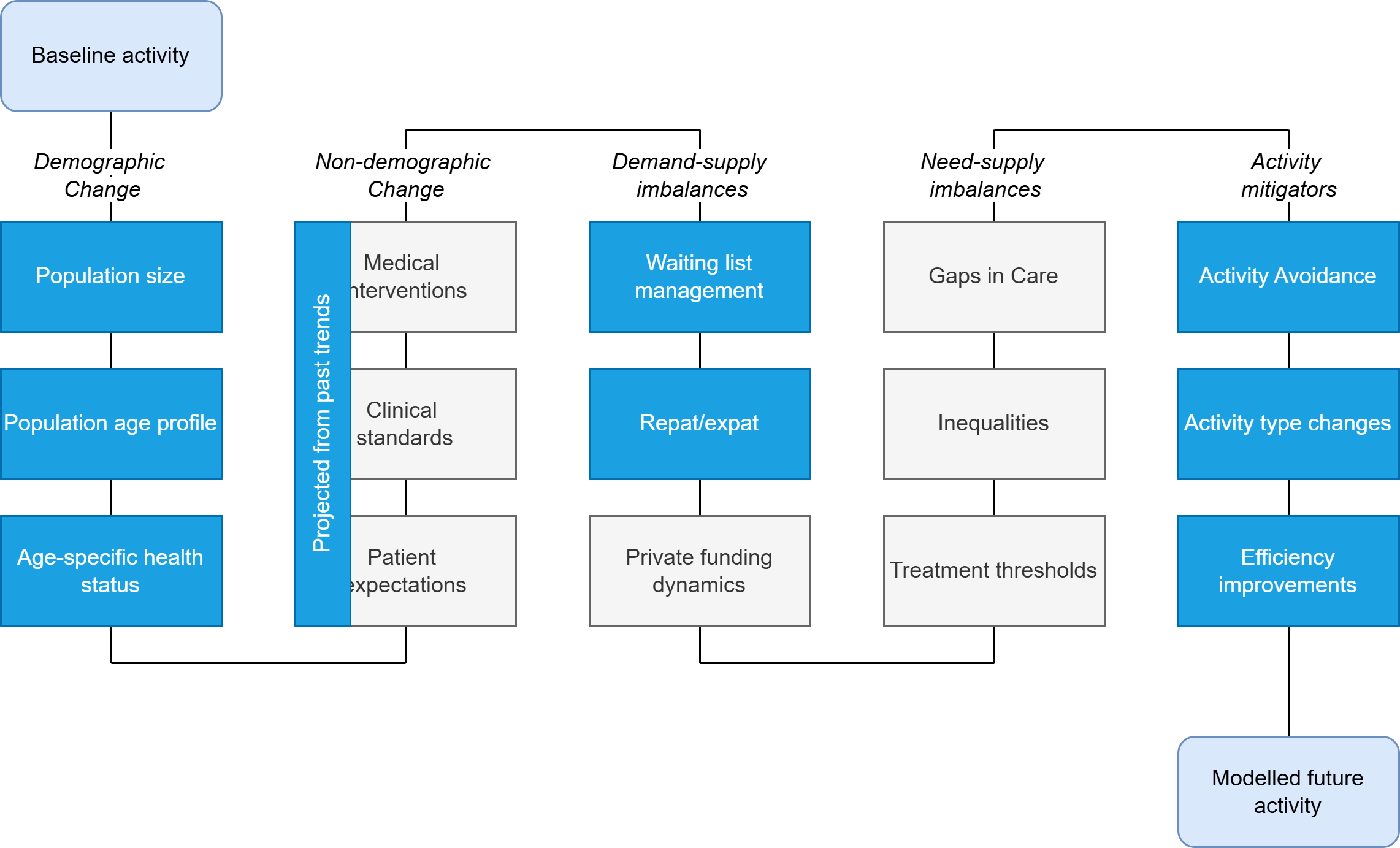
Diagram of model process
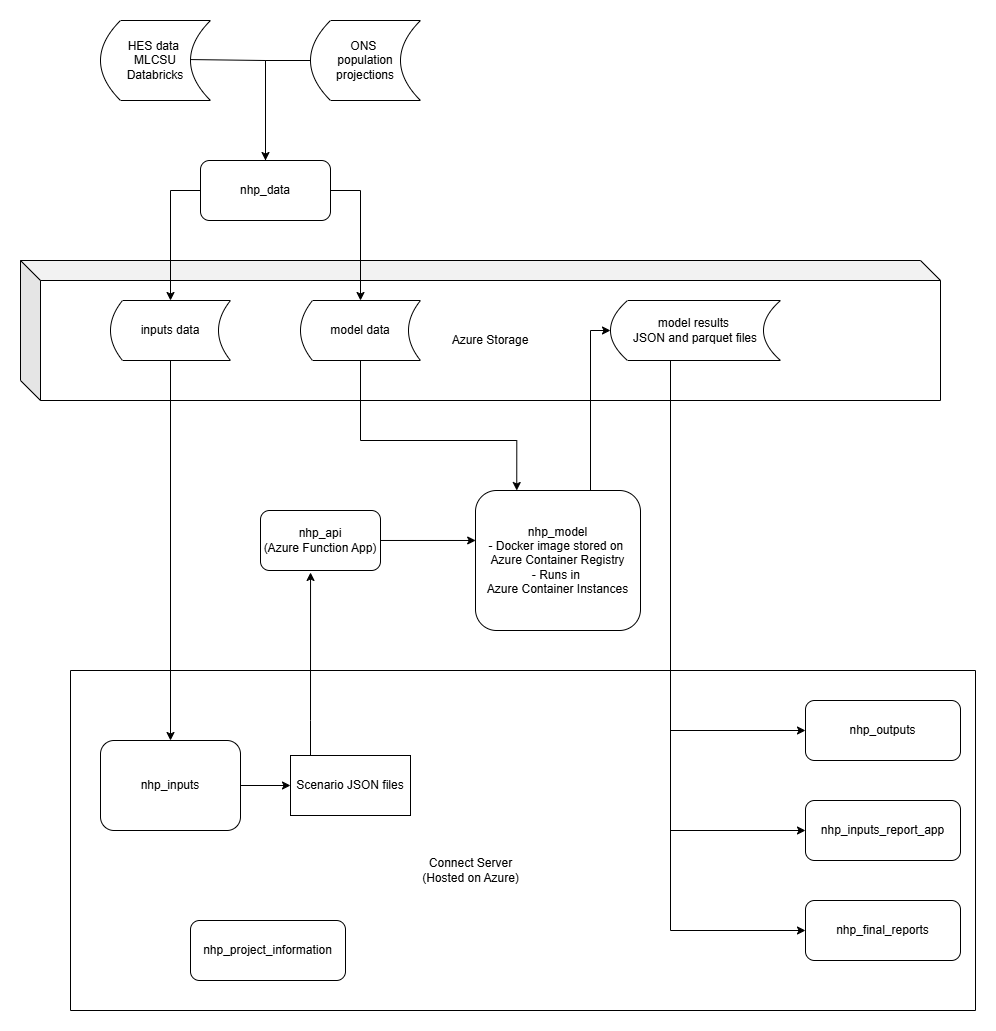
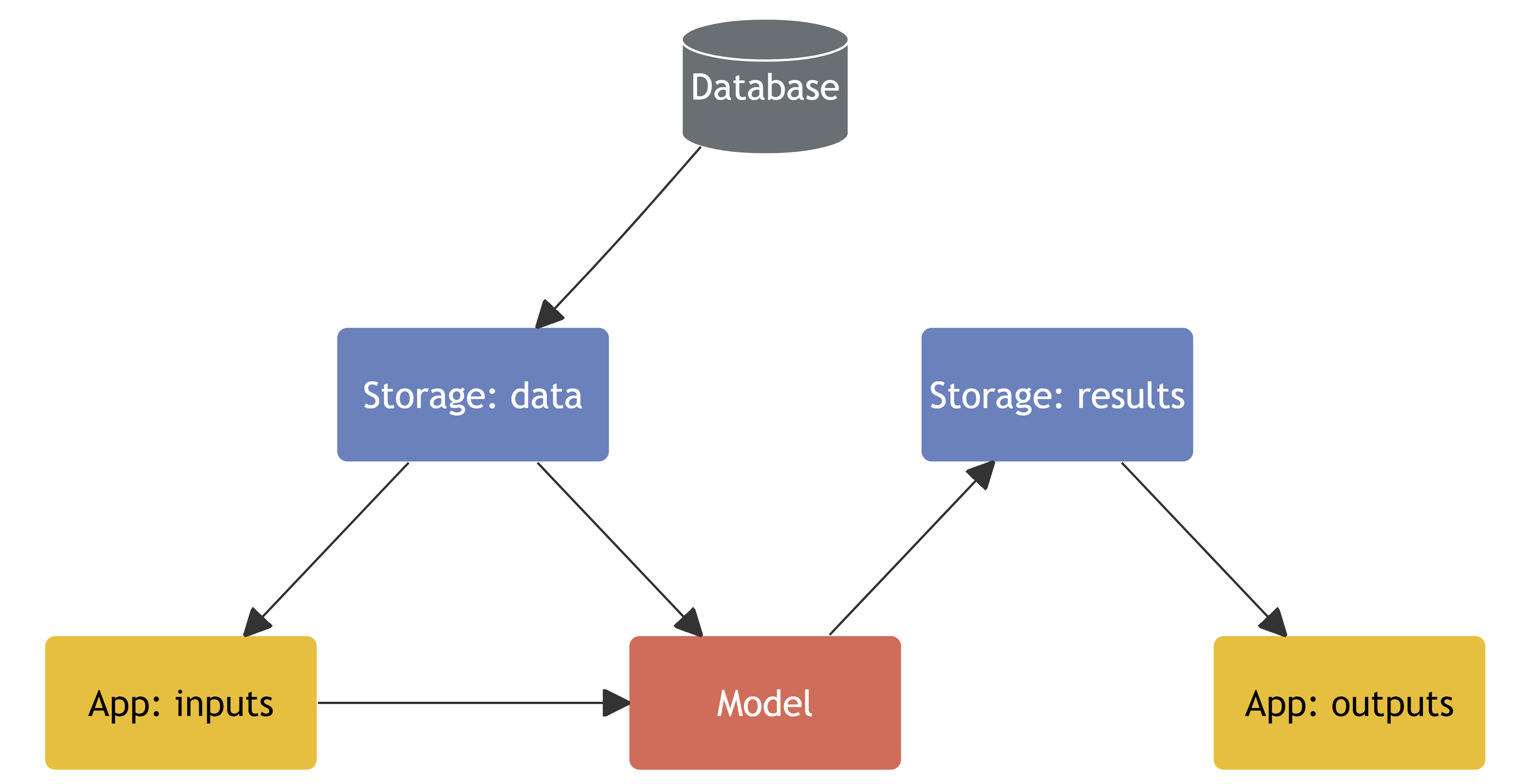
Principles
- Deploy alongside develop
- Reproducible analytical pipelines
- Transparent
- Open (FOSS where possible)
- Team skills and work management
Tools and platforms
- Data pipelines: , parquet, CSV
- Model: Python , Docker
- Apps: {shiny} and {golem} , Posit Connect
- Infrastructure and storage: Azure
- Documentation: Quarto
- Version control and collaboration: Git , GitHub
Data for NHP
- HES data stored on Azure
- Databricks and PySpark
- CSVs and TSVs for reference data
- parameters derived and stored in JSON

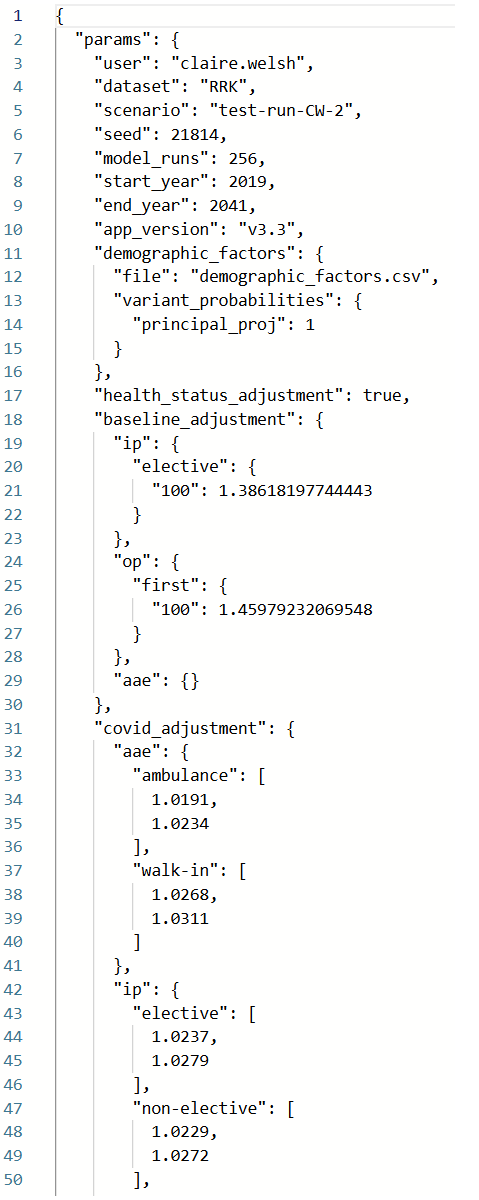
Generating inputs data
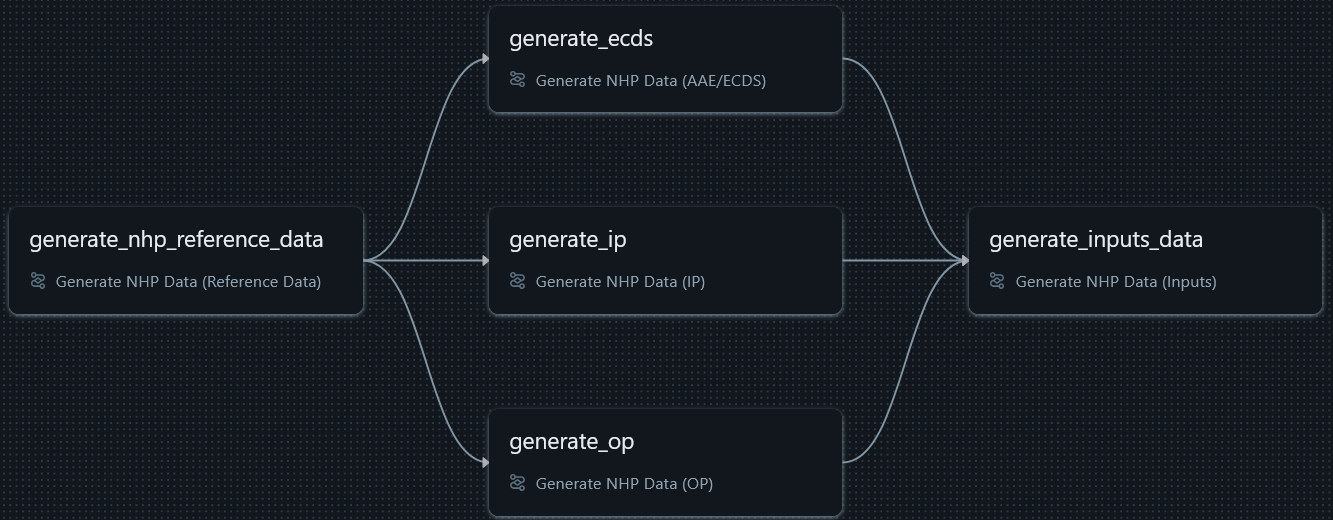
Model running
Parameters JSON passed to model via API
- Docker image stored on Azure Container Registry
- Runs in Azure Container Instance
- Built-in paralellisation features of Python language


Interfaces
Coded in R - Shiny Open repos: nhp_inputs and nhp_outputs
Modular design
- Each function is in its own .R
- Each module is separate
- UIs and servers are separate
- Packaged using {golem} to use R CMD check(), devtools::document() etc
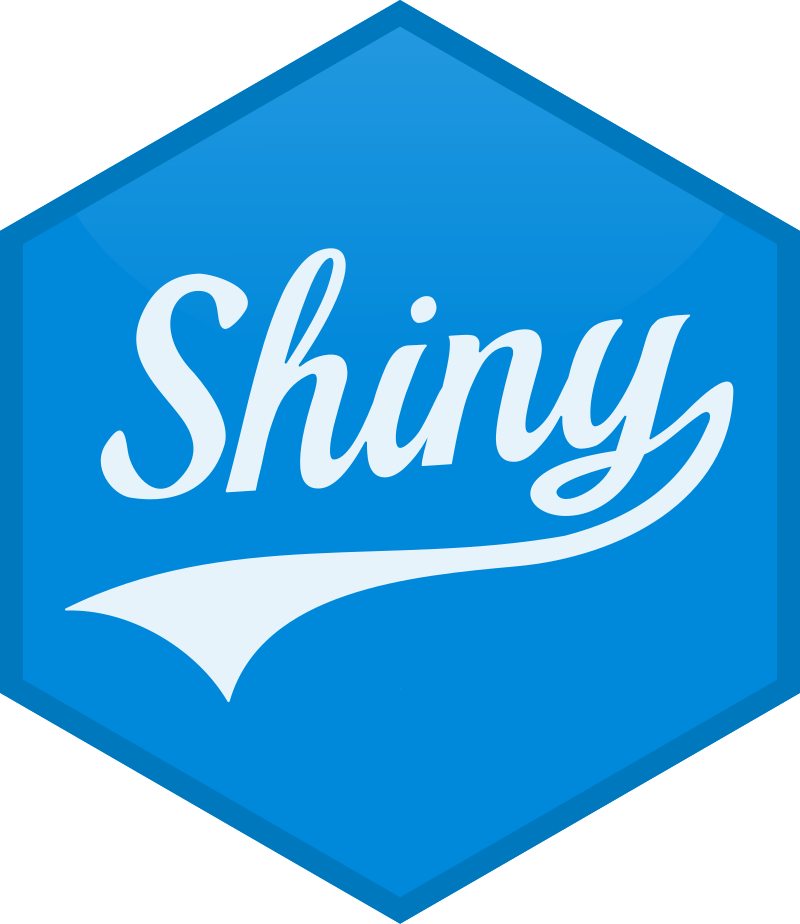
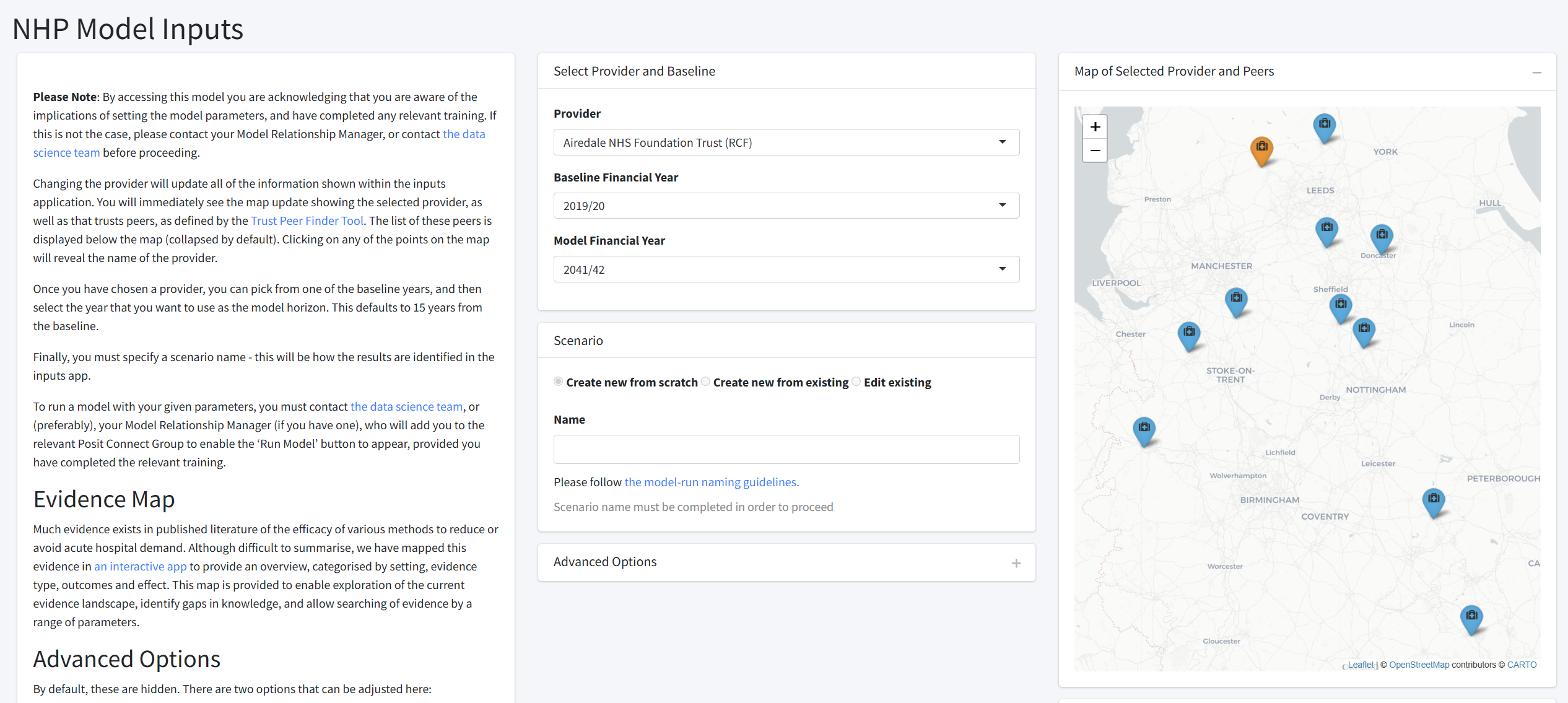

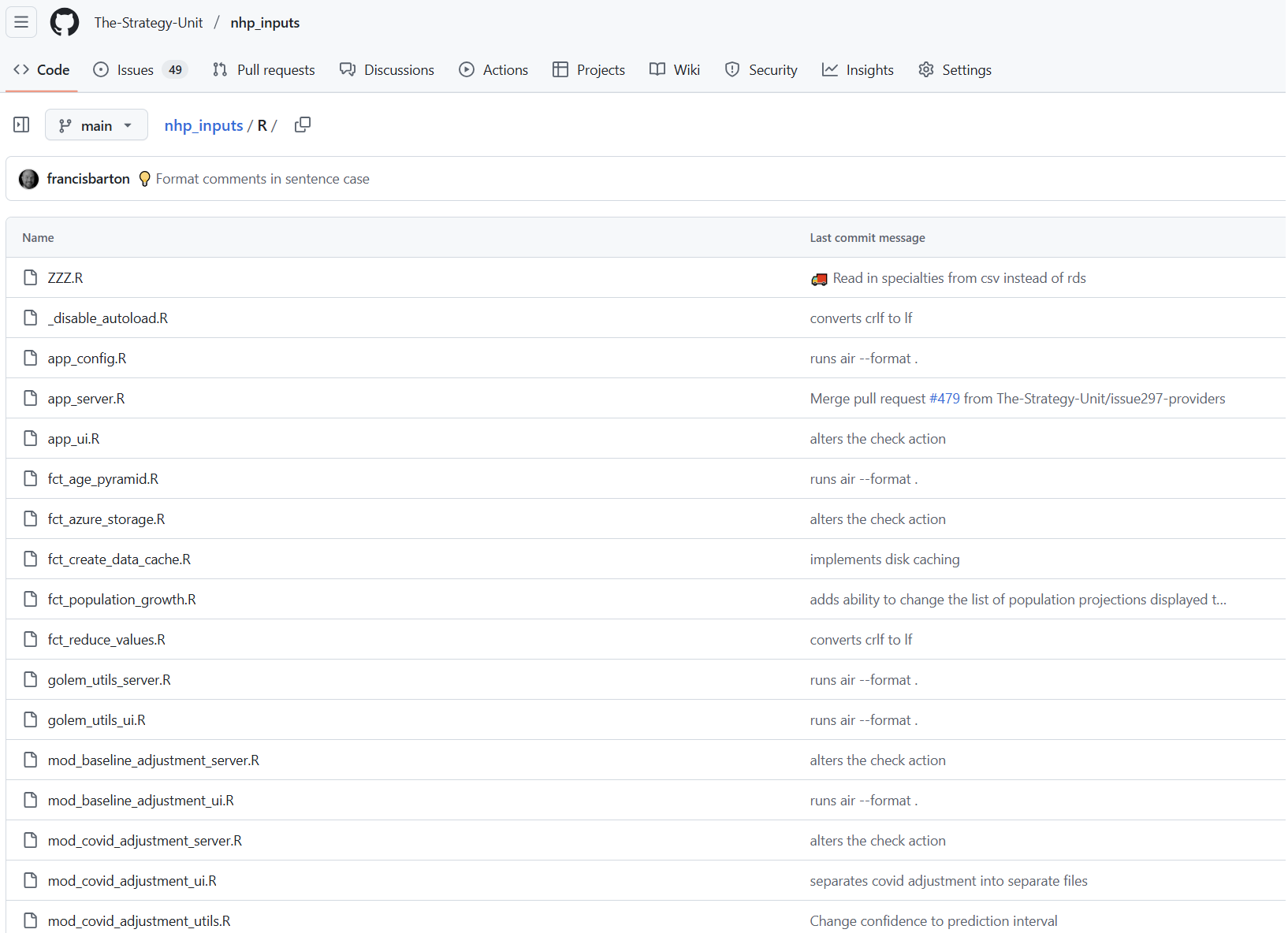
Hosting
Posit Connect
- Manage user access
- RStudio, VSCode integration ( and )
- Can handle secrets
- No limits on views
- We deploy a separate app per model version
- Unambiguous
- Backwards compatability
Outputs
Many formats:
We use a _brand.yml to help easily maintain style format of outputs (Quarto and Shiny).
Reproducible Analytical Pipeline (RAP) principles
Data versioning
Data and model follow the same semantic versioning1.
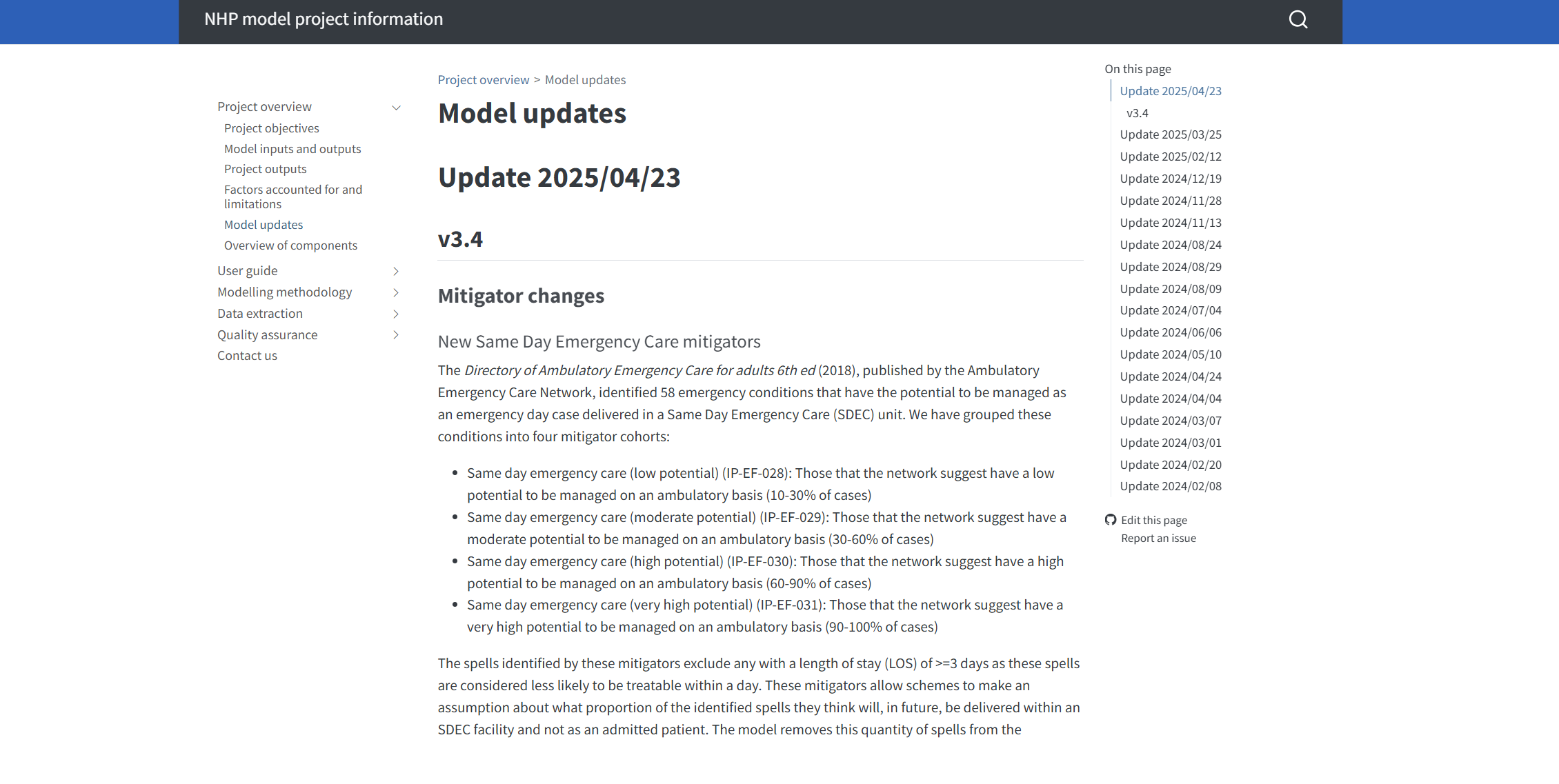
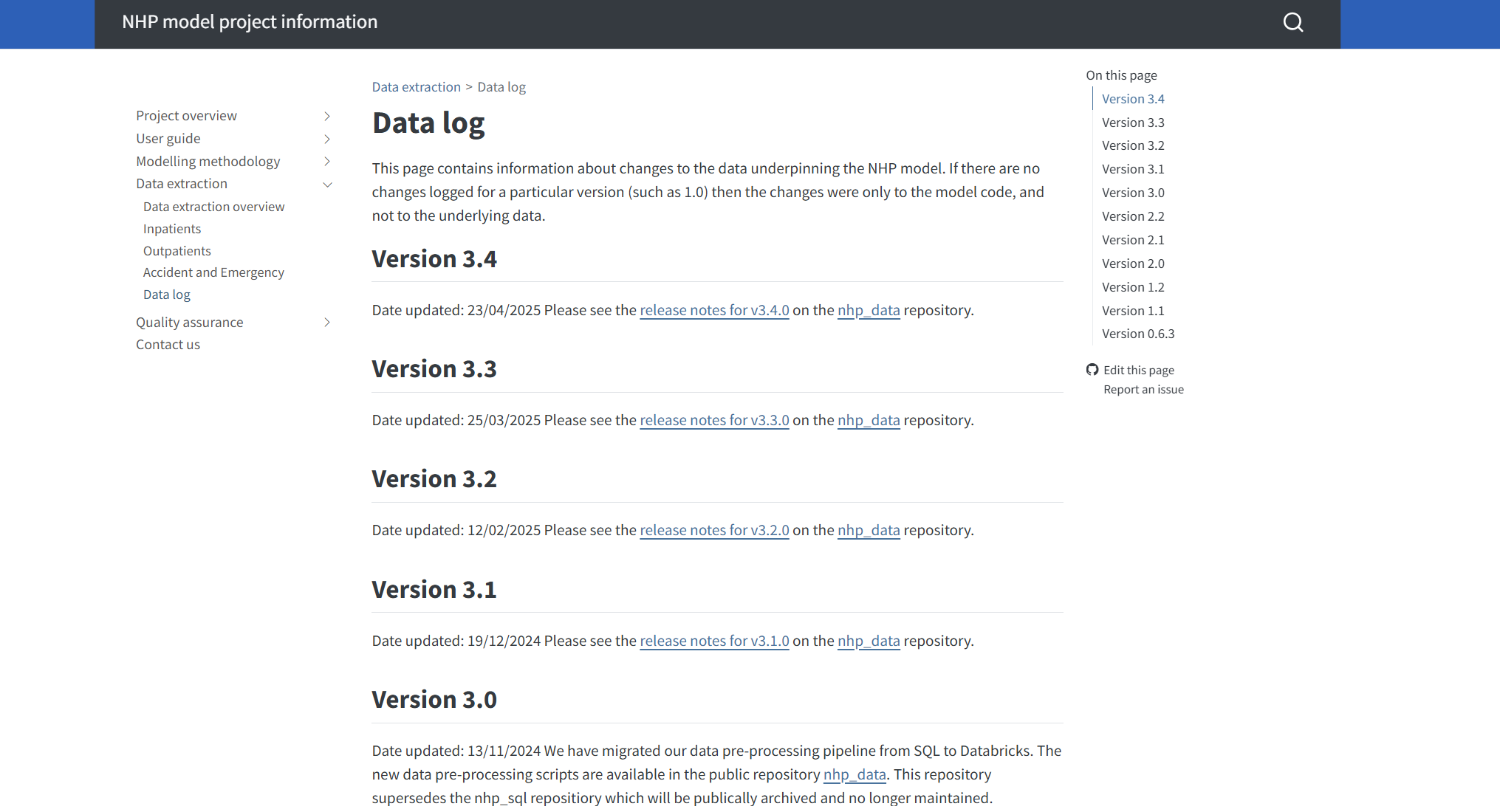

RAP
RAP continued
- Documentation
- Project Information
- READMEs on GitHub
- Docstrings, packaged apps (golem)
- JSON schema {✔❌} for validating the parameters passed to the model
Deployment (CI/CD)
How do we maintain clean, safe, working code, centrally, when we have open repositories and up to 10 people collaborating on maintaining that code alongside its active deployment?
Continuous Integration
Automated checks, tests when merging code into main
- On pull request submission
- On merge to main
Continuous Deployment
Automated checks and tests when deploying (to dev or to prod)
- On merge to main
- On release
GitHub Actions
Actions like:

Break time!








How we work
We are AGILE, and use Scrum (light)
- 3 week sprints with 1 week fallow
- Weekly sprint catch-up meetings
- Kickoff and retro
- Promote T-shape expertise while reducing ‘bus-factor’
- Transparent prioritisation processes
- Distinct team roles
- Scrum master : keeping the sprint on track
- Product owner : steer work towards the goals
- Project director : overall responsibility for delivery
- Development board : define the goals and priorities
- QA : oversee quality
Tip
Roles have enough specificity to provide clarity, but are also shared. Flat management structure.
Agile and Scrum in GitHub
Leverage a LOT of GitHub’s excellent tooling
- Projects
- Issues with bespoke labelling
- Branch protection rules
- CODEOWNERS
- Clear and consistent collaboration guidance
- Checklists
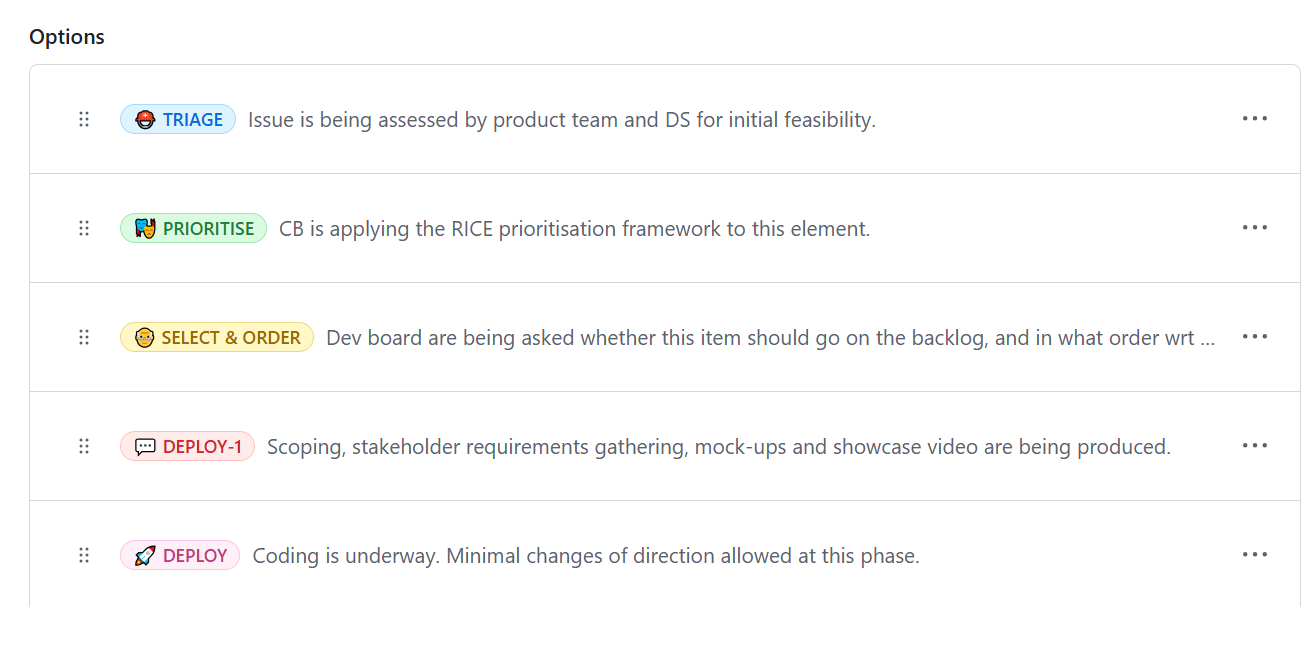
CODEOWNERS
A simple but powerful idea!

Product Team
‘The model’ is a product - it has current and potential use cases and user groups.
We need a team responsible for understanding the software business as well as the software product 🚀.
“What should we build next and why?”
Product Team Members
- Product Owner
- Product Manager
- Customer Engagement
- Project Director




Information management
🗣 Info IN
Inbox, user feedback forms, button on apps, videoed interviews, roundtable, ad hoc.
📣 Info OUT
Project information site, GitHub, how-to videos, conference and meeting presentations, blogs.
To ensure that:
- User needs guide what we build
- We help (current and future) users know what we have built and are building
Thank you
NHP Demand and Capacity (D&C) Model: A Technical Deep Dive for Data Scientists
Learn more about The Strategy Unit